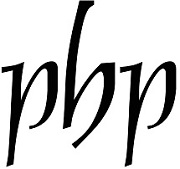The German-born American artist Hans Hofmann (1880–1966) relocated to the United States in 1932 right before the outbreak of World War II. In the midst of wartime insecurity, he opened schools in both New York and Provincetown, immersing himself in America’s growing avantgarde art scene. The works Hofmann created at the end of WWII and immediately afterward show angular abstractions and personify the uncertainties of the period. At the same time, this was also the moment that he moved toward the soft, ambiguous forms and gestures that would become the hallmark of the Abstract Expressionist movement—a movement that Hofmann presaged.
Hans Hofmann: FURY presents Hofmann’s work from 1942 to 1946. While demonstrating Hofmann’s development towards abstraction, the paintings featured here still reveal a representational quality that nods to his figurative beginnings. Linear paintings particularly emphasize this artistic trajectory. Primarily known for his expressive use of bold, often primary colors, Hoffmann here uses a palette of vivid, bright colors, and contrasting dark tones, epitomizing the conflicted postwar feeling. Hans Hofmann: FURY gives particular insight into an essential moment in Hofmann’s career—his first solo exhibition in New York in 1944 at Peggy Guggenheim’s gallery, which Clement Greenberg considered “a breakthrough in painterly versus geometric abstraction that heralded abstract expressionism.”
Hans Hofmann: FURY presents Hofmann’s work from 1942 to 1946. While demonstrating Hofmann’s development towards abstraction, the paintings featured here still reveal a representational quality that nods to his figurative beginnings. Linear paintings particularly emphasize this artistic trajectory. Primarily known for his expressive use of bold, often primary colors, Hoffmann here uses a palette of vivid, bright colors, and contrasting dark tones, epitomizing the conflicted postwar feeling. Hans Hofmann: FURY gives particular insight into an essential moment in Hofmann’s career—his first solo exhibition in New York in 1944 at Peggy Guggenheim’s gallery, which Clement Greenberg considered “a breakthrough in painterly versus geometric abstraction that heralded abstract expressionism.”

